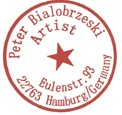Am also in this market, I currently have the Canon 24mm TS-E II, Pentax 645 35mm A and the Hasselblad 50mm FLE.
Just saw this on Ebay when searching for the price of a Contax 645 35mm.
https://www.ebay.com.au/itm/264680715261?ul_noapp=true
and
https://www.facebook.com/kimca1977/
I contacted the guy and asked about the aperture, considering it is controlled electronically and this was his reply....
"Hello,
Thanks for your interest.
We have modified the iris to allow manual operation.
Question always welcome.
Best regards,
Kim"
Also asked about whether it would be cheaper without modifying to PL mount and this was his reply
" Maintaining the mount does not affect the cost of the operation.
This is because all parts of the lens have to be replaced by changing the aperture manually and rebuilding the housing. "
I also asked about whether it can be changed to an Eos mount and he replied
" It can be changed.
Since the mount side has been modified by PL work, it can be changed without problems.

"
Very steep price but I can imagine how much work goes into it. Cannot quite remember what the Cambo conversion for the Actus is but I think it was over $1000 US and that is potentially less work..
https://www.cambousa.com/distagon-35-retrofit-for-cambo-actus
I wonder if any extra vignetting is introduced by this mod, when using it for the purpose of a "Shift" lens?

